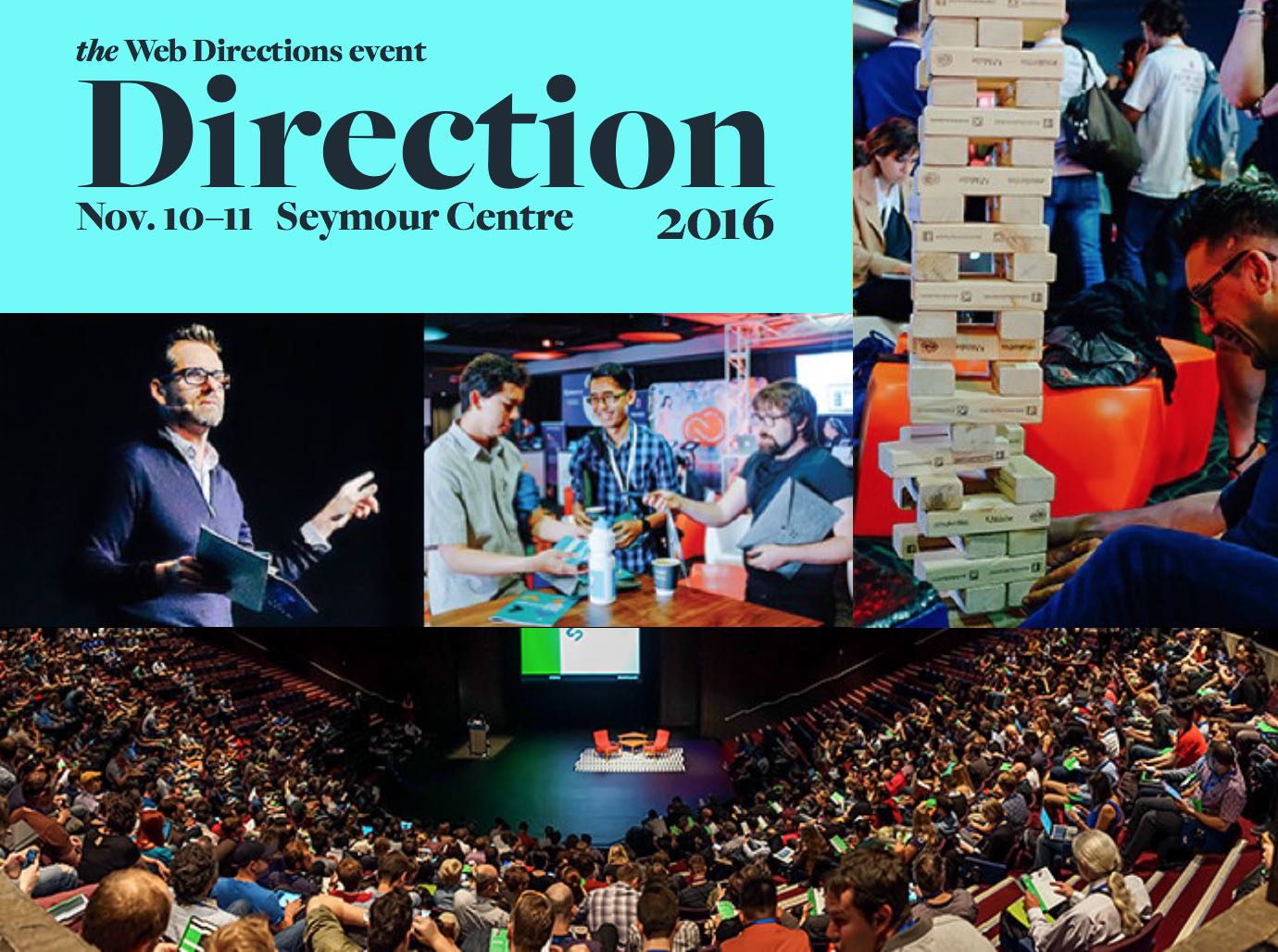One Question, Many Answers: Part I
As you know, we now publish a print and digital magazine to accompany our conferences, called Scroll. The Direction 16 edition of Scroll features, as did its predecessors, a series of interviews where conference speakers answer an identical set of questions.
To help whet your appetite for the magazine and the conference, we’re going to publish some edited excerpts from the interviews in coming weeks.
First up, we asked each of our participating speakers the following question:
What’s one thing you thought we would have had by now?
Mark Pesce (Inventor, VRML):
Nanotechnology. I was around when the original principles were being dreamed up by K. Eric Drexler – he was getting his Masters at MIT when I was doing my undergraduate research. The concepts in ‘Engines of Creation’ are still some distance away, because the more we’ve learned about the nanoscale, the more we’ve learned how little we know about the nanoscale. I hope we’ll see it soon, but it looks like we’re learning more from biology than materials science – right now.
Caroline Sinders (Machine Learning Designer, Buzzfeed):
One thing I think is really fascinating is that for a long time technology and encryption have really helped protect the web innocence, so that we didn’t need legislation protecting the web. What I mean by that is that technology was evolving and moving so quickly that we didn’t actually need to have jurisdiction or legal rights centred around the web to define safety and an open web and secure spaces. So, one thing I would have thought we’d have by now, given in the last couple of years the ways in which the web is being regulated in different countries, is a generalised bill of rights for the web, and I’m surprised that this hasn’t come up in places like the United Nations.
Pasquale D’Silva (Product Designer, Hype):
Visual tools that generate useful code… There’s hundreds of these new prototyping tools on the market now, which all do more or less the same thing, yet none of them render any useful output, besides the prototype. Don’t get me wrong, the prototype is immensely useful, but why not go all the way? I spend too much time pairing with engineers to re-implement my prototypes.
Jacob Bijani (Product Designer/Engineer, Tumblr):
More digital forms. I’m still surprised how often I have to fill out hand-written forms, then give it to someone who just types it back into a computer. It’s very counter-productive, we both have computers that are already connected to each other.
Jenn Bane (Community Director, Cards agains Humanity):
By now, I thought we would’ve had a more established dialogue about mental health in the workplace. I don’t know of many people who feel comfortable telling their boss, “My brain is attacking me today, I need to work from home.” Or, “I’m an introvert, I need to take a sick day to replenish and so I can be at my best.” Or, “I need to take Wednesday mornings off so I can go to therapy.” I’m incredibly fortunate that I work in a place where this dialogue is unfolding, and frankly, I just got lucky. I didn’t do anything special in my career to be granted this luxury–and it is a luxury. It shouldn’t be. I wish everyone had more of an opportunity to take care of themselves.
Jonathan Shariat (Product Designer):
Better design in Government and healthcare services. These are two major areas that provide critical services for people and yet are plagued with confusing designs that hurt people. Medical devices where one wrong tap can kill a patient, vital government services like providing food to those who can’t afford it but are too confusing to use. It pains me to think about the harm that is caused each day by services like these and how much potential for good is waiting to be tapped into. We need to use technology to serve our needs, not be another layer between what we need.
Anna Pickard (Editorial Director, Slack):
A better understanding that technology is made by humans, and needs all kinds of humans working on one end in order to be able to work for all kinds of other humans at the other. The technology is making things better, more easy to access, more easy to get around, and to make people’s experience better, but – I don’t know, it just amuses me that people think Siri comes up with things to say all by itself. Oh, also hair that can automatically change colour. And teleportation. And the ability to converse civilly on the internet.
Matt Griffin (Film Maker & Designer):
The one thing I thought we’d have by now on the web? Stable video conferencing with an intuitive UI. That seems to be the hardest problem in computer science, as far as I can tell. That and ubiquitous wifi are two things that seem essential to modern life, yet are still terribly lacking. Aside from those two things, I’m generally in awe of progress on the web. Sort of like with the postal service – I’m constantly amazed that any package or letter ever arrives at its destination – the web continues to amaze me with its relentless, shambling tenacity.
Aubrey Blanche (Global Head of Diversity & Inclusion, Atlassian):
Besides the flying cars from The Jetsons? I’m extremely excited about the possibilities for artificial intelligence and machine learning to disrupt bias and inequity. We’re not there yet, but there are a lot of people – from technologists to journalists – highlighting the way machines can reflect or interrupt errors in human judgment. We know human judgement is prone to a wide variety of cognitive biases, from a preference for people like ourselves (in-group bias) to difficulty assessing the talent of people from minority groups (performance bias). I’m excited to see the day we use machines not just to automate tasks, but to help us be the best versions of ourselves.
Andy Clarke (Designer & Art Director):
Invisibility. Do you remember how, as a child, you thought that if you couldn’t see someone, that they couldn’t see you standing behind the curtains or with your bottom sticking out from under a table? In the mid-seventies, I loved the ‘Invisible Man’ TV series starring David McCallum as Dr. Daniel Westin, a scientist who invents a ‘molecular disintegrator’ that he uses to turn himself invisible. Like every boy with a watch in 1976, I wished that it would help me toggle my invisibility. I still wish that my Apple Watch would do that too.
Josh Clark (IxD, Big Medium):
I’m constantly delighted by what we do have. But I’d sure be happy to see someone invent a physical search engine. You know, to search for: “my keys,” “the remote control,” “my wallet.” And I’d be happy to see teleportation come along, too. I mean, I’d visit Australia all the time.
Want more?
Like to see and read more like this? Be the first to score invitations to our events? Then jump on our once-a-week mailing list where we round up the week’s best reading and watching on all things Web. And you’ll get a complimentary digital copy of our brand new magazine, Scroll.
Great reading, every weekend.
We round up the best writing about the web and send it your way each Friday.

